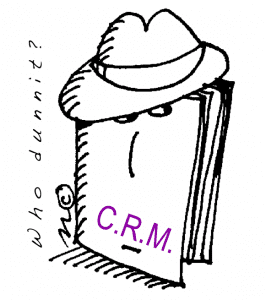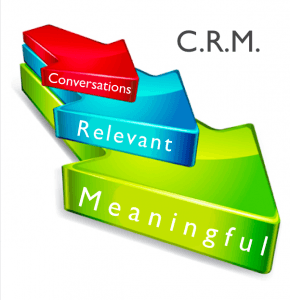The mystery of CRM

Sometimes, I get the feeling that Customer Relationship Management or “CRM,” is about as badly understood a concept as marketing itself. What I studied in business school in terms of marketing was a far cry from the marketing that I practiced in my early days. At business school, you are typically taught how to negotiate with unions and hire & fire 10,000 people, while, in the real world, you don’t get involved in the recruitment process in your own team for the first five years. At Business School, you are taught how to do large scale studies when in reality you barely get to attend customer round tables at the beginning. No one teaches pantone colors or how to fill out a BOG* (what is a BOG, I hear you say?). Business schools too often provide only cursory preparation for the real world.
Customer Relationship Management at Business Schoool?
As for CRM, there wasn’t much content in my business courses about this at all (in 1993, it was admittedly a bit too early to be talking eCRM). The ability for business school professors and students to get their heads around the true challenges of effective customer relationship management is a titanesque challenge, considering that most business managers themselves barely understand how to do it. I remember when I began my marketing career at L’Oréal, we used to collect postcards with precious customer data in return for a chance to win some kind of prize in a tombola/raffle. Those postcards inevitably ended up in a cardboard box until either, they became works of art exhibiting the level of internal dust collection, or they were unceremoniously thrown out when the next product marketing manager arrived. Collecting data (or dust) is one thing. Sorting, understanding and using it is another. Now with data being available on and offline, blended CRM is an even more complex task for a marketer, much less an organization to master. And, today, consumers are increasingly reluctant to give out their data if they have been burned too often by spammers and/or overzealous mailorder catalogue companies.
It’s not about managing the database, it’s about managing the fanbase

The problem is not so much about NOT having or getting access to the data although that, too, can be an issue since the information comes from so many different sources and needs to be effectively organized. The real problem, however, is knowing what to do with it. That, of course, assumes you know why you want to be interfacing more closely with your customers!
I always liked the expression I picked up from Alex Mandossian: “worry more about your fanbase rather than your database.” Imagine this situation: your office sets up an online surveillance system that receives hundreds of hits per minute. Your audience floods in with loads of interesting ideas and critical comments. Is your team set up to sift through and decide which conversations you wish to join, which ideas will be retained, criticisms heard — much less what will be written in response to each valuable input? I cannot believe that corporations are any less well equipped materially speaking than, for example, Obama’s presidential campaign. However, despite the massive amount of commentary and “advice” that flowed into the Obama team, they showed themselves able to engage in an online conversation and, at least sufficiently, manage the inflow of precious data. Few, it would seem are the companies that are engaging with such purpose.
More and more sophisticated ‘CRM’ tools are now being created and companies are lapping them up. As said by Randall Rothenberg, the president and CEO of the Interactive Advertising Bureau, a New York-based trade group, “[w]hat’s changed is that, through interactive media, we now have tools and channels that weren’t available to us during the era of mass media, to create, shape, and utilize social communities,” Rothenberg says.
Despite the existence of evermore sophisticated tools, the art of creating customized and relevant content is virtually impossible to automate. Moreover, a customer is less likely to be satisfied with just one single interaction, looking rather for a more dynamic conversation at the different points of contact that provides relevant and meaningful content. This, surely, is the Valhalla of CRM in the future. Organizations able to get their heads around this concept will surely find themselves building powerful and durable fan bases. This is, in my opinion, what business school courses should now be teaching to the next round of managers.
*BOG : Bill of Goods
What is your opinion? Do you have some good examples of brands executing great CRM? Please share!
ADDENDUM: Nice pick up of this piece by the Customer Collective site.











As a caring, responsible customer CRM, I expect companies to listen to us, and start a conversation where our feedback leads to improvements. Better for me as a customer, and better for the company in image, and revenues too.
@yendi, In a world of crowded communications, the challenge is oftentimes figuring out HOW to listen to the customer. Getting coordination in the feeedback among the many points of contact is truly a difficult task… but, a vital one in order to make those necessary improvements…